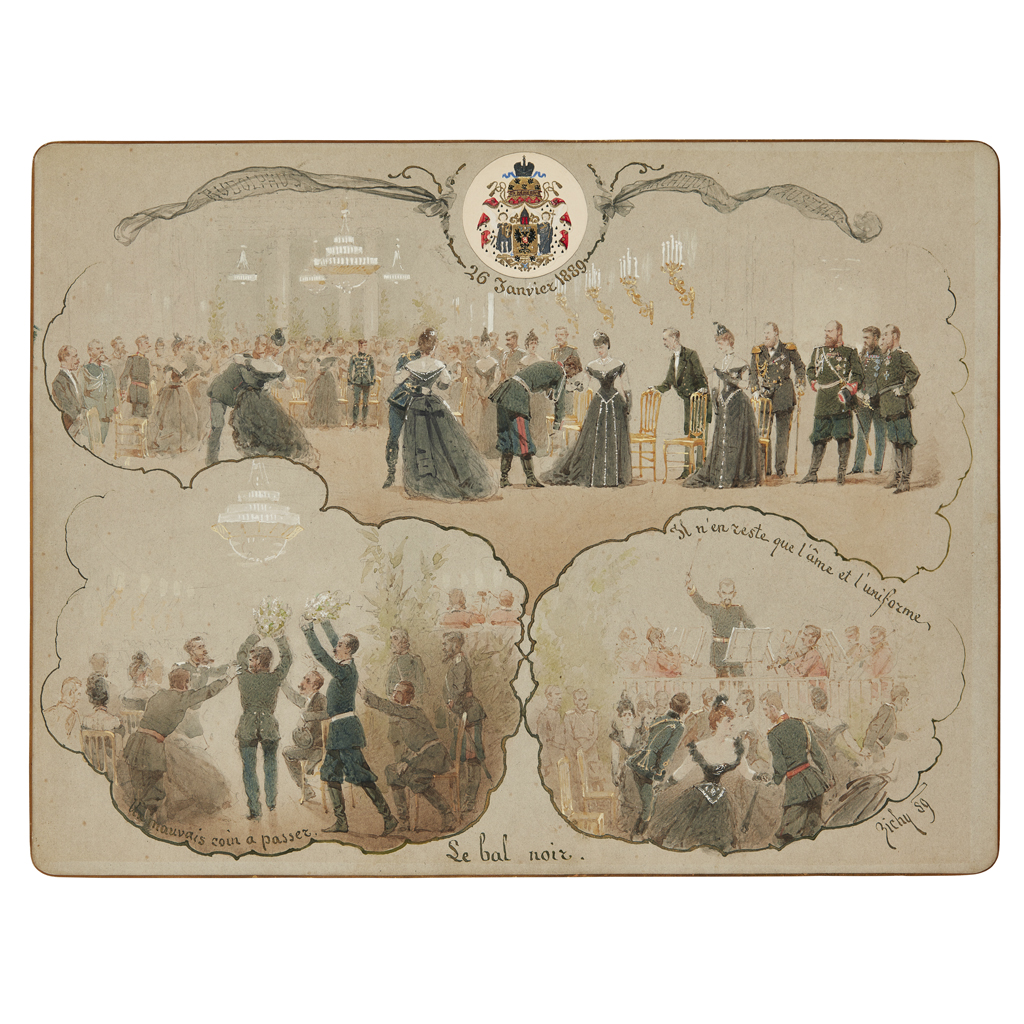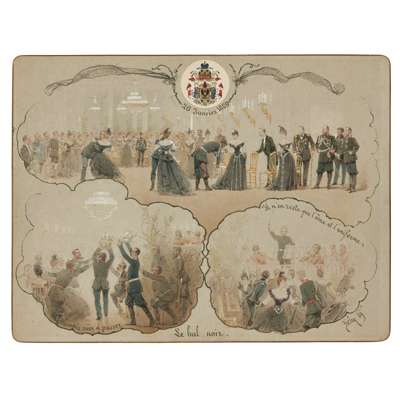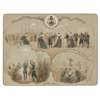
Lot 126

COUNT MIHALY VON ZICHY (HUNGARIAN 1827-1906)
LE BAL NOIR


Fine Furniture and Works of Art
Auction: 25 January 2017 at 11:00 GMT
Description
signed and dated '89, inscribed with names of possible attendees verso, mixed media with cardboard seal, unframed
Dimensions
24cm x 32cm (9.5in x 12.25in)
Footnote
Provenance: Russian Works of Art from the Collection of The Late Jan Bethge Esq.
Note: The celebrated Black Ball was held at the Winter Palace in Saint Petersburg on the 26th of January, 1889. The ball took its curious name on account of the death of Rudolf, Crown Prince of Austria, who had died in mysterious circumstances with his teenage mistress at the Mayerling hunting lodge in Austria a few days earlier. In fact it later emerged that the couple had made a suicide pact and their tragic love story has since been immortalized in many films and plays, principally the two 1936 and 1968 movies both entitled Mayerling.
According to protocol, the ball should have been cancelled. However, the Russian Empress Maria Feodorovna insisted that the event would still take place, three days beforehand informing the guests that there would now be a black dress-code. It is possible that, by doing so she sought to repay the Austrian royal family for not having mourned the death of a Russian Royal family member a few years earlier. Whatever her motive, as the work here shows, the guests successfully prepared anew their ball costumes and the ball went ahead as planned.
The artist has inscribed Prince Rudolph's name inside two decorative ribbons at the top of the painting. The painting is divided into three sections representing different episodes of the ball. The top section shows the Russian Emperor Alexander III standing third from the right. The bottom left illustration probably depicts an amusement which is inscribed in French as "it is just a hard time to go through." Similarly, the bottom right image portrays the royal orchestra with a conductor and a dancing crowd. It is inscribed as "he is just a uniform". Both inscriptions might be a cutting reference to the deceased Prince.
Mihály Zichy, born in Hungary in 1827, died in Saint Petersburg in 1906, originated from a noble Hungarian family. Moving to Russia in 1847, he rose to become a court artist in 1859 and produced numerous paintings of the life of the imperial court in the periods between 1859 to 1873 and 1880 to 1906. Zichy was admitted to Saint Petersburg's Academy of Art for his works depicting the coronation of Alexander II.

